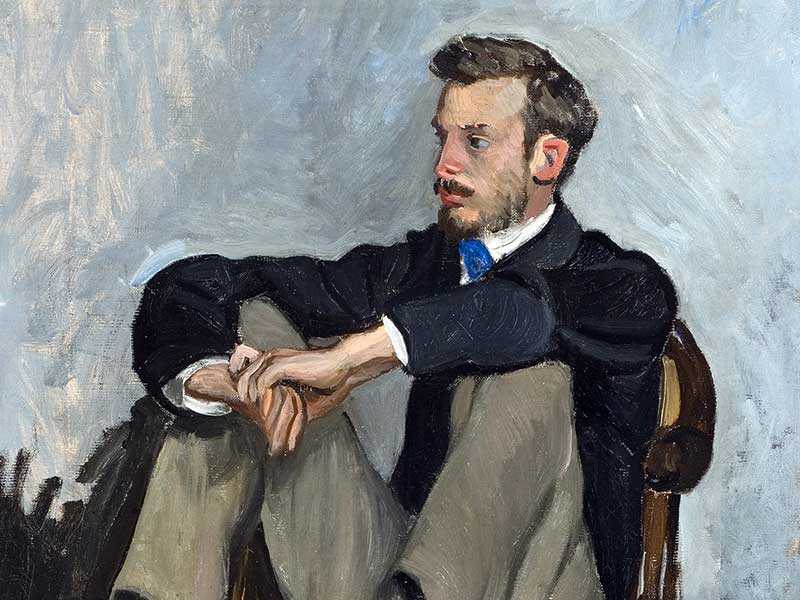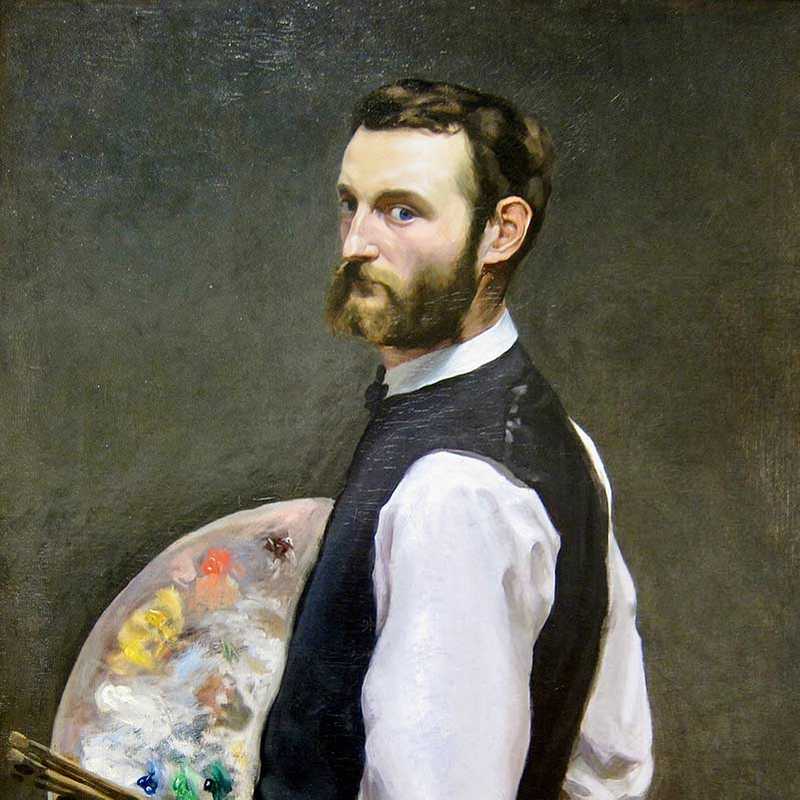Frederic Bazille was a member of the original band of impressionists. But he died early, at the age of 28, in the 1870/1 Franco-Prussian war.
Unlike many of the impressionists (Manet in particular) Frederic Bazille was not a ladies' man. But was he gay?
Though there's no definite proof one way of the other, our answer is a cautious 'yes'.
First, there is no evidence of Bazille having relationships with women. Yet he was young, came from a wealthy family, and was dashing in appearance. And his sexual conduct was in sharp contrast with other impressionists: both Claude Monet and (to a greater degree) Edouard Manet were popular with the ladies. So this may be a pointer towards Bazille's sexuality, but it is hardly conclusive - he might just have been shy.
Second, and perhaps more telling, is the fact that a number of Bazille's works picture naked or scantily clad men. Again, this isn't conclusive in itself. But pictures of naked men in contemporary settings were certainly unusual for the time.
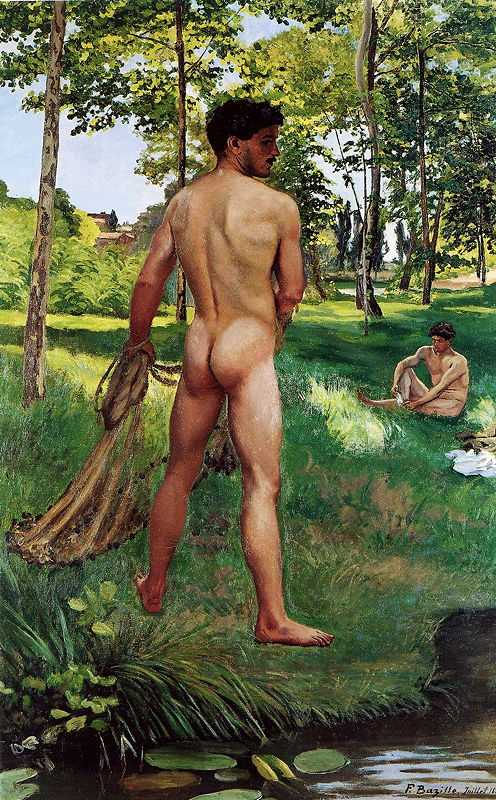
Indeed, Bazille's Summer Scene (1869) - depicting six men in their underwear and a young boy swimming - seems to depict a male-only (perhaps homoerotic) utopia. It is to be contrasted with Manet's Dejeuner sur l'Herbe (1862-3), which shows a naked woman, a scantily clad woman, and two fully dressed men.
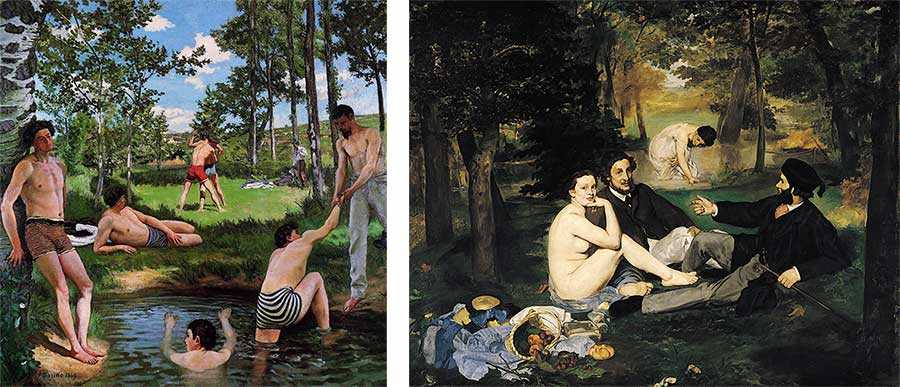
Other examples of Bazille's output of naked men are found below.
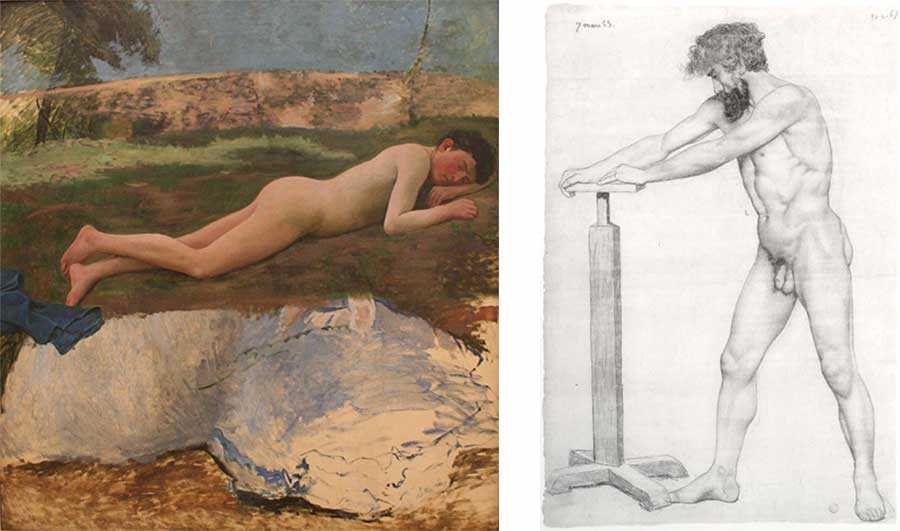
Third, Bazille joined the army in 1870 and sadly died in battle at the end of that year. He did not need to do so, and ignored those who asked him to reconsider his decision. Patriotism is of course one explanation for Bazille's decision. But there may be something else in play here too.
As the Washington Post put it, when reviewing a 2017 exhibition of Bazille's works:
Was he asserting conventional patriotic pieties? Covering up for a perceived masculine deficiency? Seeking the stimulus of a homosocial environment? Or some combination of all these? He may not have known the answer himself.
Again, this is far from conclusive evidence. But it might just explain Bazille's motivation.



